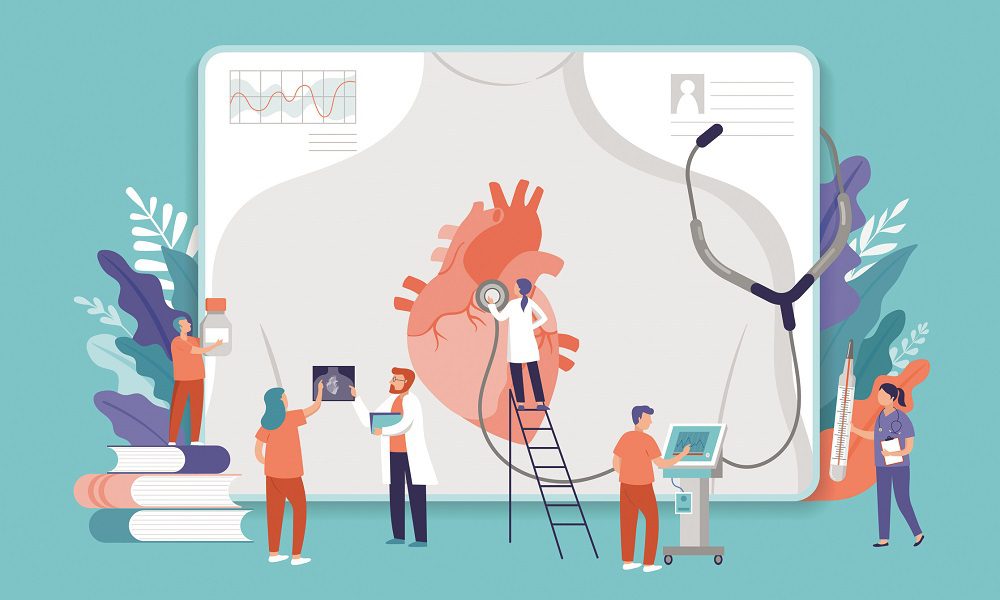The “golden years” are meant to be a time of ease and relaxation, of enjoying retirement, and playing with grandchildren, but a stealthy health issue can interfere with those plans: cardiac valve disease. It might start with shortness of breath and feeling tired, or you might feel no symptoms at all. The next thing you know, you could be having chest pains and fainting spells.
Cardiac valve disease, which affects about 13 percent of Americans who were born before 1943, occurs when the valves of the heart don’t function properly. Although valve problems can be severe and even life-threatening, the good news is that most are also highly treatable. Bottom Line Health spoke with Joshua C. Grimm, MD, assistant professor of cardiac surgery at the University of Pennsylvania, to learn more.
Understanding the disease
The heart has four valves that open and close to control the flow of blood into and away from it: the mitral, the tricuspid, the pulmonary, and the aortic. Any valve can become diseased, but the aortic valve is most commonly affected. Each valve has flaps, called leaflets, that open and close once per heartbeat. Cardiac valve disease occurs when one or more of those valves doesn’t work well.
Regurgitation occurs when diseased valves become “leaky” and don’t completely close. Blood leaks back into the chamber it came from and not enough can be pushed through the heart.
Stenosis happens when the opening of the valve is narrowed and stiff, and the valve is unable to open fully when blood tries to pass through.
Atresia refers to instances in which the valve isn’t formed, and a solid sheet of tissue blocks the blood flow between the heart chambers.
Prolapse occurs when a valve has improperly closing leaflets.
Symptoms to watch for
In the early stages of valve disease, many of the adverse effects on the heart may be corrected with the right treatment. But left unchecked, the disease can cause complications including heart failure, stroke, blood clots, and death.
“The longer you wait, the more of a deleterious effect valvular pathology will have on your heart,” Dr. Grimm says. “By the time you do see a surgeon or a cardiologist, sometimes, that damage is irreversible.”
So if you have any of the following symptoms, even if they’re mild, check in with your doctor: shortness of breath, particularly when active or lying down, fatigue, chest pain or palpitations, swelling of the abdomen, ankles and feet, dizziness, fainting, or irregular heartbeat. You also might have a symptom you’re unaware of—a heart murmur that can be heard when a doctor listens to your heart with a stethoscope.
Dr. Grimm’s No. 1 piece of advice is to listen to your body. “Similar to your car that turns the check-engine light on … there are often signs that things are not going right. If you start developing these signs, don’t just say, ‘Maybe it’s a bad day,’ especially if it’s persistent over days, weeks, or months.” See a doctor as soon as possible.
Medical management
Treatment depends on which one of your four valves is affected and the type and severity of the disease. If your condition is mild or surgery is not an option, your doctor may prescribe medications to manage your symptoms and help your heart pump blood more efficiently.
- Antiarrhythmics control the heart’s rhythm.
- Anticoagulants (blood thinners) prolong the clotting time of your blood.
- Beta-blockers lower high blood pressure, help the heart beat less forcefully and can decrease palpitations in some patients.
- Diuretics remove excess fluid from the tissues and bloodstream.
- Vasodilators reduce the heart’s workload and encourage blood to flow in a forward direction.
Medications can help your symptoms and reduce further damage, but they can’t stop a valve from leaking or open a valve that’s constricted.
Surgical considerations
If a valve is seriously diseased and causing more severe symptoms, surgery may be recommended to repair or replace it. The most common surgery is aortic valve replacement, which is performed in one of two ways:
- Conventional open-heart surgery—or sternotomy—involves making an incision in the chest and opening the heart.
- Transcatheter aortic valve replacement (TAVR) is a minimally invasive procedure in which the surgeon works through a catheter that has been inserted in the groin or another access point. TAVR involves a shorter recovery time and is especially suitable for higher-risk patients.
“I know open-heart surgery sounds scary,” Dr. Grimm told Bottom Line Health, “but we’ve gotten quite good at it since its inception 60-plus years ago, and patients do quite well.” He adds: “You don’t have to go to a huge academic center. … I think it’s a myth that you have to go to some 800-bed hospital to have a good operation.”
Early intervention and treatment can help you enjoy a long life.

